
Dongguan is a "National Basketball City" and is the only prefecture-level city with 3 professional basketball clubs in China. The Guangdong Southern Tigers was the first professional basketball club in China, having won eight Chinese Basketball Association (CBA) championships in the past 10 years. The 16,000 seat Dongguan Basketball Center will be one of the venues for the 2019 FIBA Basketball World Cup. The venue has already hosted the 2015 Sudirman Cup badminton tournament. Dongguan Yulan Theater is one of China’s newest multipurpose performing arts venues. With its multi-layered exterior suggestive of an unfolding lotus petal, it has become a landmark in Dongguan city. The new cultural hub houses two theatres presenting a full schedule of performances, including Romeo and Juliet and the Chinese classic Butterfly Lovers. So far Dongguan has produced 7 original musicals by its own and made a roadshow of 60 performances in over 30 cities of China.

Beijing, sometimes called as Peking, is the capital of the People’s Republic of China and one of the most populous cities in the world, which located in northern China.Beijing is the second largest Chinese city by urban population after Shanghai and is the nation’s political,cultural and educational center. It is a major hub for the national highway, expressway, railway and high -speed rail networks. The Beijing Capital International Airport is the second busiest in the world by passenger traffic. According to the related data which showed there are over 330,000 foreign students came to China since the year of 2011. Beijing, as the first place to study for foreign students, the number of foreign students is increasingly rapid, this city would meet your all needs if you come here and will become your second hometown.
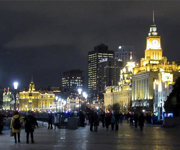
Located in the Yangtze River Delta in East China, Shanghai sites at the mouth of the Yangtze in the middle portion of the Chinese coast, the climate in this city is humid and good for people’s heath. Its traffic is very convenient for people’s life. For centuries a major administrative, education, shipping and trading town, Shanghai played an important role in the development of China’s economy. As a metropolis in the world, with its unique styles and features Shanghai attracted more and more foreign people, especially foreign students.Shanghai became a second largest city for students to study after Beijing.
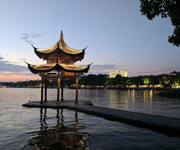
Hangzhou, as the capital of Zhejiang Province in Eastern China, Hangzhou's climate is humid subtropical with four distinctive seasons, characteristiced by long, very hot, humid summers and chilly, cloudy and drier winters (with occasional snow). Its traffic is convenient for people’s life. For foreign students, hangzhou is served by the Hangzhou Xiaoshan International Airport, which provides direct service to many international destinations such as Thailand, Japan, South Korea, Malaysia, India, Vietnam, Ethiopia, Singapore, and the Netherlands Hangzhou has a large student population with many higher education institutions based in the city. Public universities include Zhejiang University, Zhejiang University of Technology, and Hangzhou Normal University etc. Owing to different needs,more and more students come to study in this city .
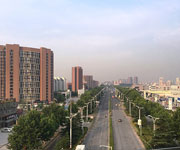
Nanjing is the capital of Jiangsu province in Eastern China. Located in the lower Yangtze River drainage basin and Yangtze River Delta economic zone, it was a prominent place in Chinese history and culture, having been the capital of China for several periods and was recognized as one of the Four Great Ancient Capitals of China. Now, Nanjing has been ranked seventh in the evaluation of “Cities with strongest Comprehensive Strength” issued by the National statistics Bureau. Nanjing has been the educational center in southern China for more than 1700 years. Currently, it boasts of some of the most prominent educational institutions in the region like China Pharmaceutical University, Nanjing University, etc. With its special characteristics, many international students choose to study in Nanjing.

Chengdu, formerly romanized as Chengtu, is the provincial capital of Sichuan province in Southwest China, as well as a major city in Western China. It holds sub-provincial administrative status. The administrative area houses 14,047,625 inhabitants: 7,415,590 within the municipality's nine urban districts and 6,632,035 in the surrounding satellite towns and counties' urban, suburb and rural area. According to the 2010 census, Chengdu is the fourth most populous city in China. Chengdu is one of the most important economic, finance, commerce, culture, transportation, and communication centers in Western China. Chengdu Shuangliu International Airport is one of the top 50 busiest airports in the world, and Chengdu Railway Station is one of the six biggest train stations in China. According to the 2007 Public Appraisal for Best Chinese Cities for Investment, Chengdu was chosen as one of the top ten cities to invest in out of a total of 280 urban centers in China. Chengdu is also popular in international company and consulates.More than 250 Fortune 500 companies and 10 consulates have established branches in Chengdu due to huge demand of Western China. In 2006, it was named China's 4th-most livable city by China Daily.

Changsha (simplified Chinese: 长沙; traditional Chinese: 長沙; pinyin: Chángshā) is the capital of Hunan Province in south-central China, located on the lower reaches of the Xiang River, a branch of the Yangtze River. Its municipality covers an area of 11,819 square kilometres (4,563 sq mi) and, according to the 2010 Census, a population of 7,044,118 inhabitants. The city's urban area has a population of 3,617,469. Changsha was important from the time of the Qin dynasty (221–207 BC). In AD 750–1100 Changsha was a major commercial hub, and its population increased greatly. Under the Qing dynasty, from 1664, it was the capital of Hunan province, and it was a major rice market. It was besieged during the Taiping Rebellion but never fell. Changsha was the site of Mao Zedong's conversion to communism. It was the scene of major battles in the Sino-Japanese War of 1937–45 and was briefly occupied by the Japanese. Rebuilt since 1949, the city is now a major interior port and a commercial and industrial center.

Zhenjiang (Chinese Postal Map Romanisation: Chenkiang; simplified Chinese: 镇江; traditional Chinese: 鎮江; pinyin: Zhènjiāng) is a city in Jiangsu province, in eastern China. Sitting on the southern bank of the Yangtze River, Zhenjiang is governed as a Prefecture-level city; it borders the provincial capital of Nanjing to the west, Changzhou to the east, and Yangzhou across the river to the north. Once known as Jingjiang (Chinese: 京江; Chinese Postal Map Romanisation: Kingkiang) or Jingkou (Chinese: 京口; Chinese Postal Map Romanisation: Kingkow), Zhenjiang is today an important transportation hub, owing to its location near the intersection of the Yangtze River and the Grand Canal.

Jinan (Chinese: 济南市) is the capital of Shandong province in Eastern China. The area of present-day Jinan has played an important role in the history of the region from the earliest beginnings of civilization and has evolved into a major national administrative, economic, and transportation hub. The city has held sub-provincial administrative status since 1994. Jinan is often referred to as the 'Spring City' for its well-known 72 artesian springs inside urban area. Its population was 6,813,984 at the 2010 census whom 4,335,989 lived in the built-up (or metro) area made up of 6 urban districts.

Zhengzhou is the capital of Henan Province located in east-central China. As a prefecture-level city, it also serves as the political, economic, technological, and educational centre of the province, as well as a major transportation hub for Central China. The city lies on the southern bank of the Yellow River, and is one of the Eight Great Ancient Capitals of China. With 8,626,505 inhabitants according to the 2010 census and 4,867,388 in its built-up area (6 urban districts + Xingyang City), the city is one of the main built up areas of Henan region. Zhengzhou is now a rapidly growing city. Greater Zhengzhou was named as one of the 13 emerging megacities or megalopolises in China in a July 2012 report by the Economist Intelligence Unit.
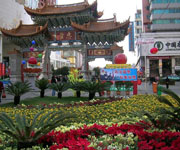
Kunming is the capital and largest city in Yunnan Province, Southwest China. Known as Yunnan-Fu (云南府, Yúnnánfǔ) until the 1920s, today it is a prefecture-level city and the political, economic, communications and cultural centre of the province as well as the seat of the provincial government. The city is also home to several universities, museums, galleries and other important economic, cultural, and educational institutions. The headquarters of many of Yunnan's large businesses are in Kunming as well. It was important during World War II as a Chinese military center, American air base, and transport terminus for the Burma Road. Located in the middle of the Yunnan–Guizhou Plateau, Kunming is located at an altitude of 1,900 metres (6,234 feet) above sea level and at a latitude just north of the Tropic of Cancer. It covers an area of 21,473 square kilometres (8,291 sq mi) and its urban area covers 2,622 square kilometres (1,012 sq mi). Kunming has population of 6,432,212, including 3,583,429 in the built-up area made up of 4 urban and 1 suburban districts, and is located at the northern edge of the large Lake Dian, surrounded by temples and lake-and-limestone hill landscapes.
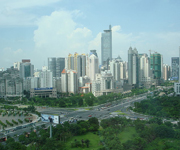
Nanning (simplified Chinese: 南宁; traditional Chinese: 南寧; Zhuang: Namzningz; meaning 'South Tranquility') is the capital of the Guangxi Zhuang Autonomous Region in southern China. It is known as the "Green City" because of its abundance of lush tropical foliage.
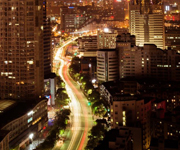
Ningbo (help·info) (Chinese: 宁波; pinyin: Níngbō; Ningbo dialect: About this sound Nyin-poh/Nyin-pou (help·info)), also formerly written Ningpo, is a seaport city in the northeast of Zhejiang province, People's Republic of China. Holding sub-provincial administrative status and separate state-planning status, as of the 2010 census, the municipality had a population of 7.6 million — with 3.5 residing in the built-up (or metro) area made of the 6-district urban area proper. Ningbo lies south of the Hangzhou Bay, which separates it from the municipalities of Jiaxing and Shanghai; to the east it faces the East China Sea; borders Shaoxing to the west; borders Taizhou to the south; and is separated from Zhoushan by a narrow body of water.
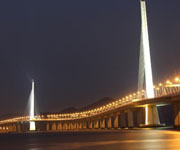
Shenzhen (Chinese: 深圳) is a major city in the south of Southern China’s Guangdong Province, situated immediately north of Hong Kong Special Administrative Region. The area became China’s first—and one of the most successful—Special Economic Zones (SEZs). It currently also holds sub-provincial administrative status, with powers slightly less than a province. According to a report published by Shenzhen Daily in 2012, Shenzhen has a population of approximately 15 million. It's one of the most built-up areas in the world and the so-called Pearl River Delta Mega City had more than 44.7 million inhabitants at the 2010 census spread over 9 municipalities (including Macao) and an area of 17,573 km2. Shenzhen’s modern cityscape is the result of the vibrant economy made possible by rapid foreign investment since the institution of the policy of “reform and opening” establishment of the SEZ in late 1979, before which it was only a small village. Both Chinese citizens and foreign nationals have invested enormous amounts of money in the Shenzhen SEZ. More than US$30 billion in foreign investment has gone into both foreign-owned and joint ventures, at first mainly in manufacturing but more recently in the service industries as well. Shenzhen is now considered one of the fastest-growing cities in the world.

Suzhou, formerly romanized as Soochow, is a major city in the southeast of Jiangsu Province in Eastern China, adjacent to Shanghai Municipality. It is a major economic centre and focal point of trade and commerce, and the second largest city in the province after its capital Nanjing. The city is situated on the lower reaches of the Yangtze River and the shores of Lake Tai and belongs to the Yangtze River Delta region. Administratively, Suzhou is a prefecture-level city with a population of 4.33 million in its city proper, and a total resident population (as of 2013) of 10.58 million in its administrative area, which incorporates neighboring suburban regions and the satellite cities of Kunshan, Lianyungang, Taicang, and Changshu. Its urban population grew at an unprecedented rate of 6.5% between 2000 and 2014, which is the highest among cities with more than 5 million people. Founded in 514 BC, Suzhou has over 2,500 years of history, with an abundant display of relics and sites of historical interest. At around 100 AD, during the Eastern Han Dynasty, it became one of the ten largest cities in the world mostly due to emigration from North China. Since the 10th-century Song Dynasty, it has been an important commercial center of China. During the Ming and Qing Dynasty, Suzhou was a national economic, cultural and commercial center, as well as the largest non-capital city in the world, until the 1860 Taiping Rebellion. When Li Hongzhang and Charles George Gordon recaptured the city three years later, Shanghai had already taken its predominant place in the nation. Since major economic reforms began in 1978, Suzhou has become one of the fastest growing major cities in the world, with GDP growth rates of about 14% in past 35 years. With high per capita incomes, Suzhou's Human Development Index ratings is roughly comparable to a moderately developed country, making it one of the most highly developed and propserous cities on the Chinese mainland.


Weifang (simplified Chinese: 潍坊; traditional Chinese: 濰坊; pinyin: Wéifāng) is a prefecture-level city in central Shandong province, People's Republic of China. It borders Dongying to the northwest, Zibo to the west, Linyi to the southwest, Rizhao to the south, Qingdao to the east, and looks out to the Laizhou Bay to the north. Its population was 9,086,241 at the 2010 census whom 2,659,938 in the built-up (or metro) area made up of 4 urban districts (Kuiwen, Weicheng, Hanting and Fangzi) and Changle County largely being urbanized.

Jiaozuo (Chinese: 焦作; pinyin: Jiāozuò; Postal map spelling: Tsiaotso) is a prefecture-level city in northern Henan province, People's Republic of China. Sitting on the northern bank of the Yellow River, it borders the provincial capital of Zhengzhou to the south, Xinxiang to the east, Jiyuan to the west, Luoyang to the southwest, and the province of Shanxi to the north. Its population was 3,540,101 at the 2010 census whom 1,301,732 live in the built-up area made of 4 urban districts (Jiefang, Shanyang, Zhongzhan and Macun) and Bo'ai County being urbanized. Jiaozuo enjoys a humid subtropical climate with continental climate influences,winters are cool and relatively dry while summers are hot and often rainy.average temperature ranges from 0.3 °C in January to 27.5 °C in July.Extremes exist from -22.4 °C to 43.6 °C °C,precipitation averages 659mm.

Baoding (Chinese Postal Map Romanisation: Paoting; Chinese: 保定; pinyin: Bǎodìng) is a city in Hebei province, China, approximately 150 kilometres (93 mi) southwest of the national capital, Beijing. At the 2010 census, Baoding City had 11,194,372 inhabitants out of which 2,176,857 lived in the built-up (or metro) area made of 3 urban districts and Qingyuan and Mancheng counties largely being conurbated, on 1,840 km2 (710 sq mi). Baoding is among 13 Chinese cities with a population of over 10 million, ranking seventh.
Chengde (Chinese: 承德; pinyin: Chéngdé), previously known as Jehol or Rehe (simplified Chinese: 热河; traditional Chinese: 熱河; pinyin: Rèhé), is a prefecture-level city in Hebei province, situated northeast of Beijing. It is best known as the site of the Mountain Resort, a vast imperial garden and palace formerly used by the Qing emperors as summer residence. The urban center had a population of approximately 450,000 as of 2009.
Langfang (Chinese: 廊坊; pinyin: Lángfáng), is a prefecture-level city of Hebei province, located approximately midway between Beijing and Tianjin. At the 2010 census, its population was 4,358,839 whom 868,066 lived in the built-up (or metro) area made of Guangyang and Anci districts. Its total area is around 6,417.28 km2 (2,477.73 sq mi). Langfang borders Baoding to the southwest, Cangzhou to the south (both prefecture-level cities of Hebei), Beijing to the north and Tianjin to the east. Sanhe City and Dachang Hui County are now conurbated with Beijing belonging to the same built-up area. It is the smallest prefecture-level city of Hebei by land area.

Shijiazhuang (Chinese: 石家庄; pinyin: Shíjiāzhuāng), also written Shikiachwang or Shihkiachwang, is the capital and largest city of North China's Hebei province.[1] Administratively a prefecture-level city, it is about 263 kilometres (163 mi) southwest of Beijing, and it administers 6 districts, 5 county-level cities, and 12 counties. At the 2010 census, it had a total population of 10,163,788, with 2,766,614 in the urban area and 4,770,400 in the built-up (or metro) area comprising the 5 urban districts, the counties of Zhengding and Luancheng, Luquan City and now Gaocheng City largely conurbated with the Shijiazhuang metropolitan area as urbanization continues to proliferate. Shijiazhuang's total population ranked twelfth in mainland China. Shijiazhuang is a modernizing and ever growing city. It experienced dramatic growth after the founding of the People's Republic of China in 1949. The population of the metropolitan area has more than quadrupled in only 30 years as a result of fast industrialization and major infrastructural developments. Shijiazhuang is a major transportation hub in the region which has contributed to the city's fast growth and development. From 2008 to 2011, Shijiazhuang implemented a three-year plan which concluded with the reorganization of the city resulting in an increase of green areas and improved urbanization (new buildings, new roads and road plans). The three-year plan was a success and even after it ended, the city continues to benefit from the major projects that were implemented with the opening of a new train station, a new airport and a subway system. Even with the green areas, however, Shijiazhuang continues to suffer from pollution. The top ten cities that suffered the most days of severe pollution includes Shijiazhuang.

Tangshan (Chinese: 唐山; pinyin: Tángshān) is a largely industrial prefecture-level city in northeastern Hebei province, People's Republic of China. It has become known for the 1976 Tangshan earthquake which measured 7.8 on the Richter scale and killed at least 255,000 residents. The city has since been rebuilt and has become a tourist attraction. The city of Tangshan is approximately 149 kilometers, 92 miles or 80 nautical miles east by south east of the country's capital city of Beijing. It takes roughly 2 hours by road to get from Tangshan to Beijing. Tangshan's prefecture population was 7,577,289 at the 2010 census, with 3,187,171 in the built-up (or metro) area made of the 6 urban core districts.

Zhangjiakou, also known also by several other names, is a prefecture-level city in northwestern Hebei province, bordering Beijing to the southeast, Inner Mongolia to the north and west and Shanxi to the southwest. At the 2010 census, its population was 4,345,485 inhabitants on 36,861.56 square kilometres (14,232.33 sq mi). The built-up (or metro) area made of Qiaoxi, Qiaodong Districts and Wanquan County largely being conurbated had 838,978 inhabitants in 2010 on 1412.7 km2. Due to its position on several important transport arteries, it is a critical transport node for travel between Hebei and Inner Mongolia and connecting northwest China, Mongolia, and Beijing.
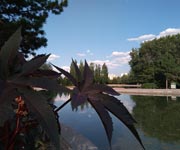
Baotou (Mongolian: ᠪᠤᠭᠤᠲᠤ ᠬᠣᠲᠠ Buɣutu qota; Chinese: 包头市) also known as Bugthot is the largest industrial city in the Inner Mongolia Autonomous Region of the People's Republic of China. Governed as a prefecture-level city, its built-up (or metro) area made up of 5 urban districts is home to 2,070,801 inhabitants with a total population of over 2.65 million accounting for counties under its jurisdiction. The city's Mongolian name means "place with deer", and an alternate name is "Lucheng" (鹿城; Lùchéng), meaning "Deer City".
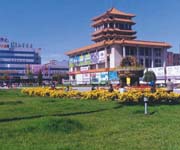
Chifeng (Chinese: 赤峰市), also known as Ulanhad (Mongolian: ᠤᠯᠠᠭᠠᠨᠬᠠᠳᠠ ᠬᠣᠲᠠ (Улаанхад хот) Ulaɣanqada qota [ʊlaːnxad xɔt], "red cliff"), is a prefecture-level city in southeastern Inner Mongolia, People's Republic of China. It borders Xilin Gol League to the north and west, Tongliao to the northeast, Chaoyang (Liaoning) to the southeast, and Chengde (Hebei) to the south. The city has a total administrative area of 90,275 square kilometres (34,855 sq mi) and has a population of 4,341,245 inhabitants. As of the 2010 census, 1,094,970 of these residents reside within in the urban districts of Hongshan, Yuanbaoshan and Songshan. However, a large part of Songshan is still rural and Yuanbaoshan is a de facto separate town 27 kilometers away from the core district of Chifeng. The city was the administrative centre of the defunct Ju Ud League (昭乌达盟; ᠵᠤᠤ ᠤᠳᠠ ᠴᠢᠭᠤᠯᠭᠠᠨ).

Hohhot (Chinese: 呼和浩特; pinyin: Hūhéhàotè; Mongolian: ᠬᠥᠬᠡᠬᠣᠲᠠ Kökeqota; Khalkha: Хөх хот Khökh khot; also romanized as Huhehot or Huhhot), abbreviated Hushi(Chinese: 呼市; pinyin: Hūshì), formerly known as Kweisui (simplified Chinese: 归绥; traditional Chinese: 歸綏; pinyin: Gūisūi), is the capital of the Inner Mongolian Autonomous Region in North China, serving as the region's administrative, economic, and cultural centre. Its population was 2,866,615 inhabitants at the 2010 census whom 1,980,774 lived in the built-up (or metro) area made up of 4 urban districts. The name of the city in Mongolian means "Blue City"—Kuku-Khoto in Mongolian—although it is also wrongly referred to as the "Green City." The color blue in Mongol culture is associated with the sky, eternity and purity; in Chinese, the name can be translated as Qīng Chéng (Chinese: 青城), literally, "Blue/Green City."

Hulunbuir or Hūlúnbèi'ěr (Mongolian: ᠬᠥᠯᠥᠨ ᠪᠤᠶᠢᠷ ᠬᠣᠲᠠ Kölön Buyir qota; Chinese: 呼伦贝尔市) is a region that is governed as a prefecture-level city in northeastern Inner Mongolia, in the People's Republic of China. Its administrative center is located at Hailar District, its largest urban area. Major scenic features are the high steppes of the Hulun Buir grasslands, the Hulun and Buir lakes (the latter partially in Mongolia), and the Khingan range. Hulun Buir borders Russia to the north and west, Mongolia to the south and west, Heilongjiang province to the east and Hinggan League to the direct south. Hulunbuir is a linguistically diverse area: next to Mandarin Chinese, Mongolian dialects such as Khorchin and Buryat, the Mongolic language Dagur and some Tungusic languages are spoken there.
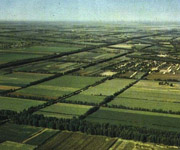
Tongliao (Mongolian: ᠲᠦᠩᠯᠢᠶᠣᠤ ᠬᠣᠲᠠ Tüŋliyou qota; Chinese: 通辽市) is a prefecture-level city in eastern Inner Mongolia, People's Republic of China. The area is 59,535 square kilometres (22,987 sq mi) and population is 3,139,153 (as of 2010); the city proper has 898,895 inhabitants (2010). The city was the administrative centre of the defunct Jirem League (哲里木盟; ᠵᠢᠷᠢᠮ ᠠᠶᠢᠮᠠᠭ). The original Mongolian name for Tongliao city proper (i.e. Horqin District) is Bayisingtu ('having buildings'), while the original name of the prefecture-level city is Jirem. The Mongolian dialect spoken in this area is Khorchin Mongolian.
Jinzhong (simplified Chinese: 晋中; traditional Chinese: 晉中; pinyin: Jìnzhōng) is a prefecture-level city with 3,249,425 inhabitants at the 2010 census in east central Shanxi province of the People's Republic of China. Before 1999, what is now Jinzhong was Jinzhong Prefecture, with its capital at the county-level city of Yuci (Chinese: 榆次; pinyin: Yúcì; Wade–Giles: Yu-tz'u). In 1999, Jinzhong Prefecture became Jinzhong Prefecture-level City, and Yuci County-level City became Yuci District (a county-level district). Yuci district is now part of Taiyuan built up area home to 3,848,151 inhabitants in 2010.
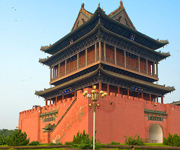
Linfen (simplified Chinese: 临汾; traditional Chinese: 臨汾; pinyin: Línfén) is a prefecture-level city in southern Shanxi province, People's Republic of China. It is situated along the banks of the Fen River. It has an area of 20,275 square kilometres (7,828 sq mi) and according to the 2010 Census, a population of 4,316,612 inhabitants of which 944,050 live in the built-up (or metro) area made up of Yaodu urban district. It was known as Pingyang (平阳) during the Spring and Autumn Period. In 2006, New York based Blacksmith Institute listed Linfen as one of the ten most polluted cities in the world. Prior to 1978, Linfen was famous for its spring water, greenery and rich agriculture and therefore nicknamed "The Modern Fruit and Flower Town". Since then it has been developing into a main industrial center for coal mining, which has been seriously damaging the city's environment, air quality, farming, health and its past status as a green village.

Taiyuan (Chinese: 太原; pinyin: Tàiyuán [tʰaɪ̂ɥɛ̌n], also known as Bing (并), Jinyang (晋阳)) is the capital and largest city of North China's Shanxi province.[2] At the 2010 census, it had a total population of 4,201,591 inhabitants on 6,959 km2 (2,687 sq mi), from whom 3,212,500 are urban on 1,460 km2 (560 sq mi). The name of the city literally means "Great Plains", referring to the location where the Fen River leaves the mountains. The city is located at the centre of the province with an East-West span of 144 km and a North-South span of 107 km.
Benxi (Chinese: 本溪; pinyin: Běnxī) is a prefecture-level city located in the east of Liaoning province, People's Republic of China, south-southeast of Shenyang. Its population was 1,709,538 at the 2010 census whom 1,011,377 lived in the built-up area made of 3 urban districts (Pinshan, Xihu and Mingshan). It was founded as a metallurgical center in 1915. Benxi Iron and Steel Company ("Bengang") is the largest employer in the city, and used to be the fourth-largest steel company in China. The second-largest industry in Benxi is coal mining. Benxi has pollution problems due to steel production and coal mining. During the disaster of Air France flight AF447, Benxi Iron and Steel Company lost 5 employees, including the executive Chen Chiping who was the wife of Liaoning's provincial governor.
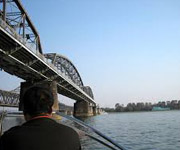
Dandong (simplified Chinese: 丹东; traditional Chinese: 丹東; pinyin: Dāndōng), previously known as Andong and Antung, is a prefecture-level city in southeastern-eastern Liaoning province, and is the largest Chinese border city, facing Sinuiju, North Korea across the Yalu River, which demarcates the Sino-Korean border. To the southwest of the city, the river flows into Korea Bay. Dandong has therefore had a dynamic history because of its strategic location for the northeast's rich natural resources and because of its convenient access to the ocean. It is designated as a major export production centre for the province, and is a port city connected by rail with Shenyang and Sinuiju. A significant amount of trade with North Korea flows through the city. The size of the administrative city (prefecture) is 14,981.4 square kilometres (5,784.4 sq mi); as of 2010, the built-up area made of 3 urban districts is 830 square kilometres (320 sq mi) in size and had 865,576 inhabitants. The administrative city covers around 2.45 million inhabitants as of 2010 census. The Hushan Great Wall, the far eastern end of the Great Wall of China, is located here.
Fushun (simplified Chinese: 抚顺; traditional Chinese: 撫順; pinyin: Fǔshùn, formerly romanised as Fouchouen, using French spelling) is a prefecture level city in Liaoning province, China, about 45 km (28 mi) east of Shenyang, with a population of 2,138,090 inhabitants (2010 census) and a total area of 11,271 km2 (4,352 sq mi), 713 km2 (275 sq mi) of which is the city proper. Situated on the Hun River ("muddy river"), it is one of the industrial and economic development hubs in Liaoning.

Fuxin (Chinese: 阜新; pinyin: Fùxīn) is a prefecture-level city in northwestern Liaoning province, People's Republic of China. The total population of the prefecture at the 2010 census is 1,819,339, of whom 669,317 are resident in the built up area, which comprises four urban districts, collectively known as 'Fuxin City'. Fuxin has a monsoon-influenced humid continental climate (Köppen Dwa), with long, cold but dry winters and hot, humid summers. A majority of the annual precipitation falls in July and August alone.
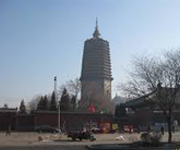
Liaoyang (simplified Chinese: 辽阳; traditional Chinese: 遼陽; pinyin: Liáoyáng) is a prefecture-level city of east-central Liaoning province, People's Republic of China, situated on the T'ai-tzu River and, together with Anshan, forms a metro area of 2,057,200 inhabitants in 2010. It is approximately one hour south of Shenyang, the provincial capital, by car. Liaoyang is home to Liaoning University's College of Foreign Studies and a number of vocational colleges. The city hosts a limited number of professional basketball and volleyball games in a modern sports facility.

Jinzhou (simplified Chinese: 锦州; traditional Chinese: 錦州; pinyin: Jǐnzhōu), is a prefecture-level city of Liaoning province, People's Republic of China. It is a geographically strategic city located in the "Liaoxi Corridor" (辽西走廊), which connects land transportation between North China and Northeast China. Jinzhou is China's northernmost seaport and the coastal economic center of West Liaoning on the north-western shore of the Bohai Sea. The total area under the jurisdiction of Jinzhou is 10,111 square kilometres (3,904 sq mi), most of which is rural, encompassing a coastline of 97.7 km (60.7 mi). It is one of the biggest cities in Liaoning with a population of 3,126,463 at the 2010 census, of whom 1,091,799 reside in the built-up area made of 3 urban districts.
Panjin (simplified Chinese: 盘锦; traditional Chinese: 盤錦; pinyin: Pánjǐn) is a prefecture-level city and a major oil production centre of Liaoning province, People's Republic of China, and is situated on the northern coast of Liaodong Bay of the Bohai Gulf. It borders Anshan to the northeast and east, Yingkou across the Liao River, as well as Jinzhou to the west and northwest. The city has an administrative area of 4,071 square kilometres (1,572 sq mi), is home to 1.39 million people all in the built-up area made of 2 urban districts plus Dawa and Panshan Counties being urbanized.
Baicheng (Chinese: 白城; pinyin: Báichéng; literally: "White City") is a prefecture-level city in the northwestern part of Jilin province, People's Republic of China, bordering Inner Mongolia to the north and west and Heilongjiang to the east and northeast. At the 2010 census, 2,033,058 people resided within its administrative area of 25,683 km2 (9,916 sq mi).
Tonghua (Chinese: 通化; pinyin: Tōnghuà) is an industrial city in the south of Jilin province, People's Republic of China. It borders North Korea to the south and southeast, Baishan to the east, Jilin City to the north, Liaoyuan to the northwest, and Liaoning province to the west and southwest. Administratively, it is a prefecture-level city with a total population of 2,325,242 living in an area of 15,195 square kilometres (5,867 sq mi). Urban population is 506,877. It is known as one of the five medicine production centres in China.
Yanji (Korean pronunciation: [jʌnɡil]), is the seat of the Yanbian Korean Autonomous Prefecture, in eastern Jilin province, People's Republic of China. Its population is approximately 400,000 of which a large section is ethnic Korean. Yanji is a busy hub of transport and trade between China and North Korea. Yanji and its environs were largely unpopulated until the 1800s when Qing dynasty rulers of China began to encourage migration there, as an effort to stem encroaching Russian expansion. Yanji is now part of the Yanbian Korean Autonomous Prefecture which is situated in the most easterly part of Jilin.[2] Yanji City is centrally located, surrounded by five other county-level cities and two rural counties (see map); it is the administrative seat of the prefecture.
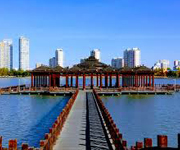
Daqing (Chinese: 大庆; pinyin: Dàqìng; formerly spelled "Taching") (pronounced Da Tshing) is a prefecture-level city in the west of Heilongjiang province, People's Republic of China. The name literally means "Great Celebration". Daqing is known as the Oil Capital of China and has experienced a phenomenal boom since oil was discovered here in 1959. Its population was 2,904,532 at the 2010 census, of whom 1,415,268 lived in the built-up area (or metro) in 4 out of the total of 5 urban districts, i.e. (Sartu, Longfeng, Ranghulu and Honggang). Anda district of Suihua is also being conurbated next.

Heihe (Chinese: 黑河; pinyin: Hēihé; "Black River") is a prefecture-level city of northern Heilongjiang province, People's Republic of China, located on the Russian border, on the south bank of the Amur River, across the river from Blagoveshchensk. Heihe has an urban population of about 211,313, while the total population of the prefecture-level city is 1,673,893. Heihe marks the northeast terminus of the Heihe–Tengchong Line, which is sometimes used to divide China into east and west.

Jixi (Chinese: 鸡西; pinyin: Jīxī) is a city in southeastern Heilongjiang Province, People's Republic of China. At the 2010 census, 1,862,165 people resided within its administrative area of 22,488.47 square kilometres (8,682.85 sq mi) and 757,647 in its built-up (or metro) area made up of 3 out of 6 urban districts (including Jiguan, Hengshan and Chengzihe). Jixi is on the Muling River about 30 km (19 mi) from the border with Russia's Primorsky Krai and 120 km (75 mi) from Khanka Lake. The mayor of Jixi is Zhu Deyi (朱德义) since July 2009. The area is one of the important coal mining bases in China. A crater on asteroid 253 Mathilde was named after the city.
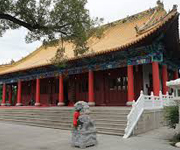
Qiqihar (simplified Chinese: 齐齐哈尔; traditional Chinese: 齊齊哈爾; pinyin: Qíqíhāěr; Manchu: Cicigar; formerly Tsitsihar) is one of the 13 Larger Municipalities in China, and the second largest city in the Heilongjiang province, People's Republic of China. The built-up (or metro) area made up of Longsha, Tiefeng and Jianhua districts had 979,517 inhabitants, while the total population of the prefecture-level city was 5,367,003 at the 2010 census. These are mainly Han Chinese, though the city is also home to thirty-four minorities including Manchu, Daur, and Mongolians.[2] Close to Qiqihar are numerous wetlands and the Zhalong Nature Reserve, famous in China for being home to numerous red-crowned cranes.
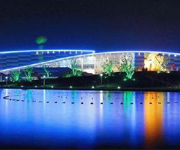
Bengbu (Chinese: 蚌埠; pinyin: Bèngbù; Wade–Giles: Peng-pu) is a mid-sized city in northern Anhui Province, China. Its built-up (or metro) area made of 4 urban districts has nearly one million residents, though the Prefecture-level city under its jurisdiction had 3,164,467 registered residents at the 2010 census. Its name means "Oyster Wharf" in Chinese, echoing its former reputation as a freshwater pearl fishery. The city's urban agglomeration is about to include Huaiyuan county, which is under its jurisdiction, as well as Fengyang county in Chuzhou municipality. This contiguous built-up area would have approximately 2.6 million residents.

Hefei, formerly known as Hofei, Luzhou, or Luchow, is the capital and largest city of Anhui Province in Eastern China. A prefecture-level city, it is the political, economic, and cultural centre of Anhui. Located in the central portion of the province, it borders Huainan to the north, Chuzhou to the northeast, Chaohu to the southeast and Lu'an to the west. Hefei has an area of 11,434.25 km2 (4,414.79 sq mi) and, at the 2013 census, a population of 7,611,000 inhabitants. Its built-up area ("metro") was home to 5,031,123 inhabitants at the 2010 census encompassing all urban districts and Feidong and Feixi counties largely being urbanized.
Huaibei (Chinese: 淮北; pinyin: Huáiběi) is a prefecture-level city in northern Anhui Province, People's Republic of China. It borders Suzhou to the east, Bengbu to the south, Bozhou to the west, and the province of Henan to the north. The population was 2,114,276 inhabitants at the 2010 census, all in the built-up area, comprising 3 urban districts and Suixi County largely being built.
Huainan (Chinese: 淮南; pinyin: Huáinán) is a prefecture-level city with 2,334,000 inhabitants in central Anhui Province, People’s Republic of China. It borders the provincial capital of Hefei to the south, Lu’an to the southwest, Fuyang to the west, Bozhou to the northwest, Bengbu to the northeast and Chuzhou to the east. Its built-up area is home to 1,938,212 inhabitants in 2010 spread out on 4 urban districts (Tianjia'an, Datong, Xiejiaji, Bagongshan and 1 county Fengtai) nowadays in agglomeration.

Huangshan (simplified Chinese: 黄山; traditional Chinese: 黃山; pinyin: Huángshān; literally: "Yellow Mountains"), is a mountain range in southern Anhui province in eastern China. The range is composed of material that was uplifted from an ancient sea during the Mesozoic era, 100 million years ago. The mountains themselves were carved by glaciers during the Quaternary. Vegetation on the range is thickest below 1,100 meters (3,600 ft), with trees growing up to the treeline at 1,800 meters (5,900 ft). The area is well known for its scenery, sunsets, peculiarly shaped granite peaks, Huangshan Pine trees, hot springs, winter snow, and views of the clouds from above. Huangshan is a frequent subject of traditional Chinese paintings and literature, as well as modern photography. It is a UNESCO World Heritage Site, and one of China's major tourist destinations. Huangshan is also the famous place for Chinese high quality teas, such as Huangshan Maofeng, Keemun Black and Blooming Tea.
Ma'anshan (simplified Chinese: 马鞍山; traditional Chinese: 馬鞍山; pinyin: Mǎ'ānshān), also written as Maanshan, is a prefecture-level city in the eastern part of Anhui province in Eastern China. An industrial city stretching across the Yangtze River, Ma'anshan borders Hefei to the west, Wuhu to the southwest, and Nanjing to the east. It is a core city of the Nanjing Metropolitan Circle. As of the 2010 census, Maanshan was home to 2,202,899 inhabitants whom 1,366,302 lived in the built-up area made of 3 urban districts and Dangtu County largely being urbanized. After the August 2011 administrative re-regionalization of Anhui Province, its population rose to 2.20 million, as 2 additional counties were placed under its administration (He and Hanshan).
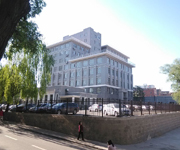
Binzhou (simplified Chinese: 滨州; traditional Chinese: 濱州; pinyin: Bīnzhōu; literally: "coastal prefecture") is a prefecture-level city in northern Shandong province, People's Republic of China. Sitting on the northern bank of the Yellow River with two arms extended to the southern bank, Binzhou borders the provincial capital of Jinan to the southwest, Dezhou to the west, Zibo to the south, Dongying to the east, and the province of Hebei to the north. The city also has a short coastline bordering the Bohai Bay. Humans have been living in the area around Binzhou since the Neolithic era. It was called “Pugu country” in the Shang Dynasty, and was a county in the Qin Dynasty. It was first called Binzhou in era of the Five Dynasties because it borders the Bohai Sea. Nowadays, it has more than 3.7 million inhabitants. The major Industries are based on oil, chemicals and textiles.
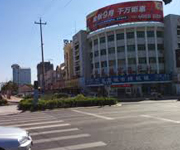
Dongying (simplified Chinese: 东营; traditional Chinese: 東營; pinyin: Dōngyíng), a prefecture-level city, lies on the northern (Bohai Sea) coast of Shandong province, People's Republic of China. At the 2010 census, 2,035,338 people resided within its administrative area of 7,923.26 km2 (3,059.19 sq mi) and 998,968 in the built-up area made up of Dongying district and Kenli County largely being urbanized. Dongying is home to the Shengli Oilfield, which is, after Daqing (Heilongjiang), the second largest oilfield nationally.

Jining (simplified Chinese: 济宁; traditional Chinese: 濟寧; pinyin: Jǐníng) is a prefecture-level city in southwestern Shandong province. It borders Heze to the southwest, Zaozhuang to the southeast, Tai'an to the northeast, and the provinces of Henan and Jiangsu to the northwest and south respectively. Jining, which is located right to the north of the Lake Nanyang (Chinese: 南阳湖; pinyin: Nányáng Hú), is today the northernmost city reachable by navigation on the Grand Canal of China. Its population was 8,081,905 at the 2010 census, of whom 1,241,012 lived in the built-up (or metro) area made up of Rencheng urban district on 884 km2 (341 sq mi), Yanzhou district not being totally conurbated yet.

Liaocheng (Chinese: 聊城; pinyin: Liáochéng), also known as the Water City, is a prefecture-level city in western Shandong province, People's Republic of China. It borders the provincial capital of Jinan to the southeast, Dezhou to the northeast, Tai'an to the south, and the provinces of Hebei and Henan to the west. The Grand Canal flows through the city center. Its population was 5,789,863 at the 2010 census whom 1,229,768 lived in the built-up area made up of Donchangfu district, even though large parts remain rural. During the Song dynasty, the area of present-day Liaocheng included the prefectures of Bozhou (博州) and Jizhou (濟州). In 2007, the city is named China's top ten livable cities by Chinese Cities Brand Value Report, which was released at 2007 Beijing Summit of China Cities Forum.
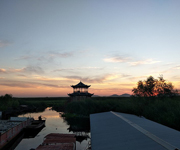
Tai'an (Chinese: 泰安; pinyin: Tài'ān) is a prefecture-level city in western Shandong province. Centered on Mount Tai, the city borders the provincial capital of Jinan to the north, Laiwu to the northeast, Zibo to the east, Linyi to the southeast, Liaocheng to the extreme west and Jining to the south. To the west, Tai'an is separated from the province of Henan by the Yellow River. Its population was 5,494,207 as of the 2010 census, of whom 1,735,425 lived in the built-up (or metro) area made of 2 urban districts (Taishan District and Daiyue District).
Qufu (Chinese: 曲阜; pinyin: Qūfù; Wade–Giles: Ch'ü1-fu4) is a city in the south-west of Shandong province, People's Republic of China. It is located at 35° 36′ northern latitude and 117° 02′ east, about 130 kilometres (81 mi) south of the provincial capital Jinan and 45 kilometres (28 mi) northeast of the prefecture seat at Jining. Qufu has an urban population of about 60,000, the entire administrative region has about 650,000 inhabitants. Qufu is the hometown of Confucius, who is traditionally believed to have been born at nearby Mount Ni. The city contains numerous historic palaces, temples and cemeteries. The three most famous cultural sites of the city, collectively known as San Kong (三孔), i.e. "The Three Confucian [sites]", are the Temple of Confucius (Chinese: 孔庙; pinyin: Kǒngmiào), the Cemetery of Confucius (Chinese: 孔林; pinyin: Kǒnglín), and the Kong Family Mansion (Chinese: 孔府; pinyin: Kǒngfǔ). Together, these three sites have been listed as a UNESCO World Heritage Site since 1994.
Weihai (Chinese: 威海; pinyin: Wēihǎi; English: Port Edward) is a city in eastern Shandong province, People's Republic of China. It is the easternmost prefecture-level city of the province and a major seaport. Weihai borders Yantai to the west and the Yellow Sea to the east. Weihai's population is 2,804,800 at the 2010 census. Of those, 591,982 live in the built up area (Huancui urban district). Rongcheng, a county level city within Weihai, has a built up area with 1,006,795 inhabitants. The minor planet 207931 Weihai is named after this city. Between 1898 and 1930, the city was part of the British leased territory known as Weihaiwei or the Weihai Garrison (traditional Chinese: 威海衛; simplified Chinese: 威海卫; pinyin: Wēihǎi Wèi), and also between 1898 and 1930 the city itself was known as Port Edward and served as the capital of Weihaiwei.
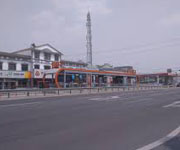
Zaozhuang (simplified Chinese: 枣庄; traditional Chinese: 棗莊; pinyin: Zǎozhuāng) is a prefecture-level city in the south of Shandong province, People's Republic of China. The second smallest prefecture-level city in the province, it borders Jining to the west and north, Linyi to the east, and the province of Jiangsu to the south. Its population is 3,729,140 at the 2010 census whom 899,753 in the built-up area made of Shizhong and Yicheng districts.

Zibo (Chinese: 淄博; pinyin: Zībó) is a prefecture-level city in central Shandong province, People's Republic of China. It borders the provincial capital of Jinan to the west, Laiwu and Tai'an to the southwest, Linyi to the south, Weifang to the east, Dongying to the northeast, and Binzhou the north. Located in the centre of Shandong, Zibo is an important transportation hub. Zibo governs 5 districts (Zhangdian, Zichuan, Boshan, Zhoucun and Linzi) and each of these districts has a distinct downtown area of their own. The T-shaped city has a total area of 5,938 km2 (2,293 sq mi), including the counties of Huantai, Gaoqing, and Yiyuan. Zibo's total population was 4.53 million at the 2010 census, of which 3,633,239 inhabitants lived in the built-up area made of 5 urban districts (metro area) plus Huantai county largely being built. The built-up area is being conurbated with Zouping County in Binzhou municipality. Zibo was the centre of the ancient State of Qi, whose capital Linzi was the most populous city in the east about 3000 years ago. Zibo is the birthplace of ancient football Cuju, which according to FIFA, was the earliest form of the sport. Pu Songling, a well-known writer of the Qing Dynasty, is one of the most famous people from Zibo. As the birthplace of Qi Culture and because of the abundant natural resources, it is an excellent tourist city in China.
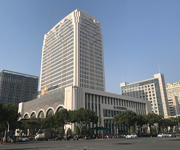
Jinhua (help·info), is a prefecture-level city in central Zhejiang province in eastern China. It borders the provincial capital of Hangzhou to the northwest, Quzhou to the southwest, Lishui to the south, Taizhou to the east, and Shaoxing to the northeast. Its population was 5,361,572 at the 2010 census including 1,077,245 in the built-up area made of two urban districts even though Lanxi City is also being conurbated soon. One can notice that the cities of Dongyang and Yiwu are now in the same agglomeration, a built-up area of 2,038,413 inhabitants bigger than the one of Jinhua itself. Jinhua is rich in red soil and forest resources. The Jinhua or Wu River flows through the Lan and Fuchun to the Qiantang River beside Hangzhou, which flows into Hangzhou Bay and the East China Sea. In mediaeval China, it formed part of the water network feeding supplies to the southern end of the Grand Canal. It is best known for its dry-cured Jinhua ham.
Lin'an City (Chinese: 临安市; Pinyin: Lín'ān Shì) is a county-level city in Hangzhou, Zhejiang Province of China. It is located in northwestern Zhejiang. Lin'an City has an area of 3124 square kilometers, and a population of 520,000 in 2002. The postal code is 311300, and the phone code 0571. The city government is located at 398 Yijin Street. The city is rich in natural resources, abundant in rainfall, and has a warm climate. All of these factors work together allowing the city to be covered with 71.3% forest. Such an ecological environment breeds more than 4,700 biological species. Mountains, lakes, forest, hot springs, caves, and other ancient remains are everywhere.
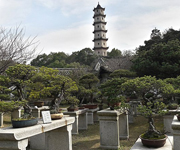
Wenzhou (About this sound listen (help·info)) (simplified Chinese: 温州市; traditional Chinese: 溫州市; pinyin: Wēnzhōu Shì; former official name: Wenchow) is a prefecture-level city in southeastern Zhejiang province in the People's Republic of China. At the time of the 2010 Chinese census, 6,642,592 people lived in its built-up (or metro) area made of Wenzhou's city proper (3,039,439 inhabitants in 3 urban districts), Ruian and Yueqing cities largely being urbanized, and Yongjia County conurbated on its southern part. The area under its jurisdiction (which includes two satellite cities and six counties) held a population of 9,122,102. Its coastline opens on the East China Sea; its borders connect it to Lishui on the west, Taizhou on the north, and Fujian to the south. The name Wenzhou, translates to "a mild and pleasant land." Originally known as Yongjia, Yung-chia or Yungkia (Chinese: 永嘉; pinyin: Yǒngjiā), Wenzhou was a prosperous foreign treaty port, which remains well-preserved today. It is situated in a mountainous region and, as a result, has been isolated for most of its history from the rest of the country, making the local culture and language very distinct not only from the rest of China but from neighbouring areas as well. It is also known for its emigrants who leave their native land for Europe and the United States, with a reputation for being entrepreneurs who start restaurants, retail and wholesale businesses in their adopted countries. People of Wenzhou origin make up a large number of ethnic Chinese residents of Italy, France, and Spain.

Changzhou (Chinese: 常州) is a prefecture-level city in southern Jiangsu province of China. It was previously known as Yanling, Lanling, Jinling, and Wujin. Located on the southern bank of the Yangtze River, Changzhou borders the provincial capital of Nanjing to the west, Zhenjiang to the northwest, Wuxi to the east, and the province of Zhejiang to the south. The city is situated in the affluent Yangtze Delta region of China. Its total population was 4,592,431 inhabitants at the 2010 census whom 3,290,918 lived in the built-up area made up of 5 urban districts. The agglomeration is now part of Shangai-Suzhou-Wuxi built-up area which has now more than 36,000,000 inhabitants, only second in China after Pearl River built-up area.
Huai'an (Chinese: 淮安; pinyin: Huái'ān), formerly called Huaiyin (simplified Chinese: 淮阴; traditional Chinese: 淮陰; pinyin: Huáiyīn) until 2001, is a prefecture-level city in central Jiangsu province of Eastern China. It borders Lianyungang, Suqian to the north, Yancheng to the northeast, Yangzhou to the southeast, and Chuzhou (Anhui) to the southwest. As of the 2010 census the municipality had 4,799,889 inhabitants, of whom 2,494,013 lived in the four urban districts.
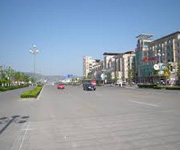
Lianyungang (simplified Chinese: 连云港; traditional Chinese: 連雲港; pinyin: Liányúngǎng) is a prefecture-level city in northeastern Jiangsu province, People's Republic of China. It borders Yancheng to its southeast, Huai'an and Suqian to its south, Xuzhou to its southwest, and the province of Shandong to its north. Its name derives from Lian Island (formally Dongxilian Island) the largest island in Jiangsu Province which lies off its coastline, and Yuntai Mountain, the highest peak in Jiangsu Province, a few miles from its town center, and the fact that it is a port. Lianyungang (as Yuntai Mountain) was known in the West as Haichow (Wade–Giles romanization). This was one of the four original ports opened up for foreign trade in the 1680s by the Qing Dynasty Government. The others were Ningbo, Xiamen and Guangzhou.

Wuxi (simplified Chinese: 无锡; traditional Chinese: 無錫; pinyin: Wúxī) is an old city in southern Jiangsu province, People's Republic of China. Split in half by Lake Tai, Wuxi borders Changzhou to the west and Suzhou to the east. The Yangtze River lies between the northern half of Wuxi and Taizhou, while the southern half of the city borders the province of Zhejiang. Wuxi is also famous for being one of the birthplaces of China's modern industry and commerce, as well as the hometown of many important businessmen who have played essential roles in building commerce in Shanghai since the early 20th century.

Xuzhou, otherwise known as Pengcheng in ancient times, is a major city in and the fourth largest prefecture-level city of Jiangsu province, People's Republic of China. Its population was 8,577,225 at the 2010 census whom 2,623,066 lived in the built-up (or metro) area made of Quanshan, Gulou, Yunlong and Tongshan districts. It is known for its role as a transportation hub in northwestern Jiangsu, as it has expressways and railway links connecting directly to the provinces of Henan and Shandong, the neighboring port city of Lianyungang, as well as the economic hub Shanghai. Before the adoption of Hanyu Pinyin, the city's name was typically Romanized as Suchow, Süchow, although also appearing as Siu Tcheou [Fou], Hsu-chou, Hsuchow, and Hsüchow.

Yancheng (Chinese: 盐城; pinyin: Yánchéng) is a prefecture-level city in northeastern Jiangsu province, People's Republic of China. The city with the largest jurisdiction area in Jiangsu, Yancheng borders Lianyungang to the north, Huai'an to the west, Yangzhou and Taizhou to the southwest, Nantong to the south, and looks out to the Yellow Sea to the east. Yancheng, literally "Salt City", is named after the salt harvest fields that surround the city. According to historical records,[which?] collection and production of sea salt in the region began as early as 119 BC during the Western Han Dynasty, when the settlement on the current location of Yancheng was named Yandu County (鹽都縣). According to the 2010 Census, Yancheng has a registered population of 8,203,728 — with 7,260,240 permanent residents. Its built up area made of Tinghu and Yandu Districts, was home to 1,615,717 inhabitants in 2010.
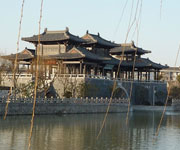
Yangzhou (simplified Chinese: 扬州; traditional Chinese: 揚州; pinyin: Yángzhōu) is a prefecture-level city in central Jiangsu province in the People's Republic of China. Sitting on the northern bank of the Yangtze River, it borders the provincial capital of Nanjing to the southwest, Huai'an to the north, Yancheng to the northeast, Taizhou to the east, and Zhenjiang across the river to the south. Its population is 4,414,681 at the 2010 census and its built up area is home to 2,146,980 inhabitants including three urban districts plus currently in the agglomeration. Historically it is one of the wealthiest of China's cities, known at various periods for its great merchant families, poets, painters, and scholars. Its name (lit. "Rising Prefecture") refers to its former position as the capital of Yangzhou prefecture in imperial China.

Dengfeng (Chinese: 登封; pinyin: Dēngfēng; Postal map spelling: Tengfeng) is a county-level city in Zhengzhou, Henan Province, China. In ancient times, it was known as Yangcheng (simplified Chinese: 阳城; traditional Chinese: 陽城; pinyin: Yángchéng). Dengfeng has an area of 1220 square kilometers and a population of 630,000. Dengfeng is located at the foot of the Mount Song, one of the most sacred mountains in China. The city is one of the most renowned spiritual centres of China, home to various religious institutions and temples, such as the Taoist Zhongyue Temple, the Buddhist Shaolin Temple, as well as the Confucian Songyang Academy, hence its poetic expression derived from Chinese literature as the spiritual "centre of heaven and earth".
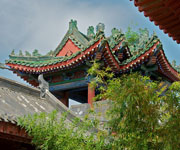
Kaifeng (simplified Chinese: 开封; traditional Chinese: 開封; pinyin: Kāifēng; Wade–Giles: K'aifeng), known previously by several names (see below), is a prefecture-level city in east-central Henan province, People's Republic of China. It was once the capital of the Northern Song Dynasty. There are currently nearly 5 million people living in its metropolitan area. Located along the southern bank of the Yellow River, it borders the provincial capital of Zhengzhou to the west, Xinxiang to the northwest, Shangqiu to the east, Zhoukou to the southeast, Xuchang to the southwest, and the province of Shandong to the northeast.
Luoyang (Chinese: 洛阳; pinyin: Luòyáng;; IPA: [lwɔ̂jɑ̌ŋ]) is a prefecture-level city in western Henan province of Central China. It borders the provincial capital of Zhengzhou to the east, Pingdingshan to the southeast, Nanyang to the south, Sanmenxia to the west, Jiyuan to the north, and Jiaozuo to the northeast. As of the final 2010 census, Luoyang had a population of 6,549,941 inhabitants with 1,857,003 people living in the built-up (or metro) area made of city's five urban districts, all of which except the Jili District not urbanized yet. Situated on the central plain of China, Luoyang is one of the cradles of Chinese civilization, and is one of the Four Great Ancient Capitals of China.
Xinxiang (simplified Chinese: 新乡; traditional Chinese: 新鄉; pinyin: Xīnxiāng; Postal map spelling: Sinsiang) is a prefecture-level city in northern Henan province, People's Republic of China. It borders the provincial capital of Zhengzhou to its southwest, Kaifeng to its southeast, Hebi and Anyang to its north, Jiaozuo to its west, and the provinces of Shanxi and Shandong to its northwest and east respectively. Its population is 5,707,801 at the 2010 census of whom 902,731 are in the built-up area made of 3 out of 4 urban districts (Weibin, Hongqi and Muye). As the city is expanding very quickly, in a few years, Huixian and Weihui cities as well as Fengquan district and Xinxiang county will be added to the built-up area.
Enshi (Chinese: 恩施; pinyin: Ēnshī) is a county-level city in and the seat of Enshi Tujia and Miao Autonomous Prefecture, in western Hubei province, People's Republic of China. The prefecture's legislature, executive and judiciary are seated here, as well as its CPC and Public Security bureau. The entire county-level city of Enshi has an area of 3,967 square kilometres (1,532 sq mi) and a population of 780,000.
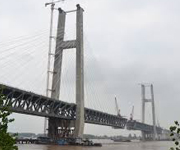
Huanggang City (simplified Chinese: 黃冈; traditional Chinese: 黃岡; pinyin: Huánggāng) is a major municipality (also known as a Prefecture) in eastern Hubei province, People's Republic of China. It is situated to the north of the middle reaches of the Yangtze River and is bounded in the north by the Dabie Shan mountain range. Seven counties fall under its jurisdiction (Tuanfeng, Hong'an, Xishui, Qichun, Huangmei, Luotian, and Yingshan) plus two county-level cities (Wuxue and Macheng), as well as two direct administrative divisions (Huangzhou and Longganghu). The city's administrative area covers 17,446.63 square kilometres (6,736.18 sq mi) and the total population was 6,162,069 as of the 2010 census, only 366,769 of whom resided in the urban area. The Ezhou - Huanggang built-up (or metro) area was home to 1,035,496 inhabitants comprising (Echeng district and Huangzhou district of Huanggang prefecture). In 2007, the city is named China's top ten livable cities by Chinese Cities Brand Value Report, which was released at 2007 Beijing Summit of China Cities Forum.
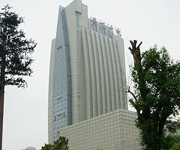
Huangshi (simplified Chinese: 黄石; traditional Chinese: 黃石; pinyin: Huángshí; literally: "yellow rock") is a prefecture-level city in southeastern Hubei province, People's Republic of China. Its population was 2,429,318 inhabitants at the 2010 census whom 1,601,687 in the built-up (or metro) area made of 4 urban district plus the city of Daye now being part of the agglomeration.
Jingzhou (Chinese: 荆州) is a prefecture-level city in southern Hubei, People's Republic of China, located on the banks of the Yangtze River. As of the 2010 census, its total population was 5,691,707, 1,154,086 of whom resided in the built-up (or metro) area comprising the two urban districts. Jingzhou's central urban area has grown out of a city historically known as Shashi; this name is preserved in the name of Shashi District, which includes the city's historical center, as well as in the names of a number of local facilities, such as Shashi Airport and a railway freight station.
Shiyan (Chinese: 十堰; pinyin: Shíyàn) is a prefecture-level city in northwestern Hubei province, People's Republic of China, bordering Henan to the northeast, Chongqing to the southwest, and Shaanxi to the north and west. At the 2010 census, its population was 3,340,841 whom 767,920 lived in the built-up (or metro) area ade of Maojian and Zhangwan urban districts on 1,193 km2. In 2007, the city was named China's top ten livable cities by Chinese Cities Brand Value Report, which was released at 2007 Beijing Summit of China Cities Forum.
Xianning (simplified Chinese: 咸宁; traditional Chinese: 咸寧; pinyin: Xiánníng) is a prefecture-level city in southeastern Hubei province, People's Republic of China, bordering Jiangxi to the southeast and Hunan to the southwest. It is known as the "City of Osmanthus".
Xiangyang (simplified Chinese: 襄阳; traditional Chinese: 襄陽; pinyin: Xiāngyáng) is a prefecture-level city in northwestern Hubei province, People's Republic of China. It was formed from two ancient cities, Xiangyang and Fancheng. It was known as Xiangfan (Chinese: 襄樊; pinyin: Xiāngfán) until December 2, 2010.[2] Xiangyang is divided by the Han River, which runs through its heart and divides the city north-south. The city itself is an incorporation of two once separate, ancient cities: Fancheng and Xiangzhou. What remains of old Xianyang is located south of the Han River and contains one of the oldest still-intact city walls in China while Fancheng was located to the north of the Han River. Both cities served prominent historical roles in both the Ancient and Pre-Modern Periods of Chinese history. Today, the city is, after the capital Wuhan, the second largest in the province, located about halfway between Wuhan and Xi'an. It is considered one of the third tier cities in China and has been a target of government and private investment as the country seeks to urbanize and develop the interior provinces. Its built-up area made up of 3 urban districts had 2,199,689 inhabitants at the 2010 census while the whole municipality contained approximately 5,500,307 people.
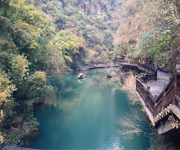
Yichang (Chinese: 宜昌) is a prefecture-level city located in western Hubei province, People's Republic of China. It is the second largest city in the province after the capital, Wuhan. The Three Gorges Dam is located within its administrative area, in Yiling District. At the 2010 census, its population was 4,059,686 inhabitants whom 1,350,150 lived in the built-up (or metro) area made of Yiling, Xiling, Wujiagang and Dianjun urban districts as Xiating District is not conurbated yet.
Changde (Chinese: 常德; pinyin: Chángdé) is a prefecture-level city in the northwest of Hunan province, People's Republic of China, with a population of 5,717,218 as of the 2010 census, of which 1,232,182 reside in the urban districts of Dingcheng and Wuling. In addition to the urban districts, Changde also administers the county-level city of Jinshi and six counties. Changde is adjacent to Dongting Lake to the east, the city of Yiyang to the south, Wuling and Xuefeng Mountains to the west, and Hubei province to the north. The area has been inhabited by humans since around 8,000 years ago. In that time, the city has changed names several times, but it has been known as Changde since the twelfth century. The city is well known for the Battle of Changde during the Second Sino-Japanese War (1937–45) and the atrocities committed then by the Imperial Japanese Army.
Chenzhou (Chinese: 郴州; pinyin: Chēnzhōu) is a city located in the south of Hunan province, People's Republic of China. Its administrative area covers 19,317 square kilometres (7,458 sq mi), 9.2% of the provincial area, and its total population reached 4,559,600 in 2001, 26% of them living in urban areas, 74% of them live in rural areas.

Hengyang (simplified Chinese: 衡阳; traditional Chinese: 衡陽; pinyin: Héngyáng) is the second largest city of Hunan Province, People's Republic of China. It straddles the Xiang River about 160 km (99 mi) south of the provincial capital of Changsha.
Huaihua lies is in the mountainous west of Hunan, south-east of Zhangjiajie National Forest Park, and shares the same mountain belt. The area's rural poverty is a continuing problem. Railroads provide the main transportation in the region, although an airport was opened in 2004. Huaihua is home to the Second Artillery Corps Base 55, which is charged with maintaining ICBMs. The nuclear assets at Huaihua are intended for small-scale nuclear conflicts (with a limited, but nuclear, exchange), as well as the ability to strike Guam, one of only two B-2 bases.
Jishou (Chinese: 吉首; pinyin: Jíshǒu) is a county-level city and the seat of Xiangxi Tujia and Miao Autonomous Prefecture, Hunan province, China. Jishou has a history of more than 2,000 years dating back to the Qin dynasty. In those days, it was affiliated with Qianzhong Prefecture (黔中郡). During the Song dynasty, a town government was established in a stockaded village, Zhenxi (镇溪寨; 鎮溪寨), which in the Ming dynasty became the Zhenxi soldiers and civilians battalion (镇溪军民千户所; 鎮溪軍民千戶所). Qianzhou Prefecture (乾州厅) was created during the Qing dynasty. During the Republic of China era it was known as Qian County (乾县; 乾縣) In 1953 the area was renamed Jishou county, with two adjacent cities, Jishou and Qianzhou. In 1982 Jishou city became the capital of Xiangxi Tujia and Miao Autonomous Prefecture. The city of Qianzhou (乾城) now lies just south of Jishou city.
Xiangtan (Chinese: 湘潭; pinyin: Xiāngtán; Wade–Giles: Hsiang-tan) is a prefecture-level city in Hunan province, China, located on the lower reaches of Xiang River. The hometowns of several founding leaders of the Chinese Communist Party, including Mao Zedong, Liu Shaoqi, and Peng Dehuai, are in the Xiangtan prefecture, as well as the hometowns of Qing dynasty painter Qi Baishi and scholar-general Zeng Guofan. As of 2010, it had 2,748,552 inhabitants, of whom 1,779,960 lived in the built-up area (2 urban districts plus Xiangtan county). Together with the four adjoining urban districts of Zhuzhou, its built-up area is home to 2,586,948 inhabitants. In 2007, the city is named China's top ten livable cities by Chinese Cities Brand Value Report, which was released at 2007 Beijing Summit of China Cities Forum.
Yiyang (simplified Chinese: 益阳; traditional Chinese: 益陽; pinyin: Yìyáng) is a prefecture-level city at the Zi River in Hunan province, People's Republic of China, straddling Lake Dongting and bordering Hubei to the north. According to the 2010 Census, Yiyang has a population of 4,313,084 inhabitants residing in an area of 12,144 km2 (4,689 sq mi). The previous census was in 2000 when it was recorded there were 4,309,143 inhabitants.
Yueyang (simplified Chinese: 岳阳; traditional Chinese: 岳陽; pinyin: Yuèyáng) is a prefecture-level city at the northeastern corner of Hunan province, People's Republic of China, on the southern shores of Dongting Lake. Yueyang has an administrative area of 14,896 km2 (5,751 sq mi) and the city proper, 304 km2 (117 sq mi). The population was 5,477,911 at the 2010 census whom 991,465 lived in the built-up (or metro) area made up of Yueyanglou District and Yunxi District. The city's most famous attraction is the Yueyang Tower.
Zhuzhou (Chinese: 株洲; pinyin: Zhūzhōu), formerly Jianning, is a prefecture-level city of Hunan Province, People's Republic of China, a little to the southeast of Changsha and bordering Jiangxi to the east. It is part of the "ChangZhuTan Golden Triangle" (comprising the cities of Changsha, Zhuzhou and Xiangtan). The city has jurisdiction over 5 counties (Yanling, Chaling, Youxian, Liling, Zhuzhou) and four districts (Hetang, Lusong, Shifeng and Tianyuan, a high-tech industrial development zone), and covers an area of 11,420 km2 (4,410 sq mi). It had 3,855,609 inhabitants as of the 2010 census, of whom 806,988 lived in the built-up area (4 urban districts). With areas adjoining Zhuzhou due to be agglomerated in a few years' time, the joint built-up area will be home to 2,586,948 inhabitants. Zhuzhou is located in a subtropical monsoon climate zone and with its abundant mineral and organic resources has one of the highest agricultural yields in Hunan Province.
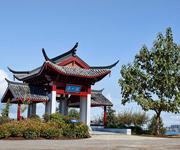
Fuzhou (Chinese: 福州; pinyin: Fúzhōu, [fǔtʂóʊ]; Fuzhou dialect: Hók-ciŭ; also formerly Minhow) is the capital and one of the largest cities in Fujian province, People's Republic of China. Along with the many counties of Ningde, those of Fuzhou are considered to constitute the Mindong (lit. East of Fujian) linguistic and cultural area. Fuzhou's core counties lie on the north (left) bank of the estuary of Fujian's largest river, the Min River. All along its northern border lies Ningde, and Ningde's Gutian County lies upriver. Fuzhou's counties south of the Min border on Putian, Quanzhou, Sanming and Nanping prefectures. Its population was 7,115,370 inhabitants as of the 2010 census, of whom 4,408,076 inhabitants are urban standing around 61.95%, while rural population is at 2,707,294 standing around 38.05 percent.
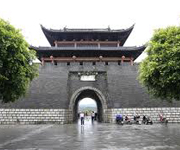
Ganzhou (Chinese: 赣州; pinyin: Gànzhōu), formerly romanized as Kanchow, is a prefecture-level city in southern Jiangxi province, People's Republic of China, bordering Fujian to the east, Guangdong to the south, and Hunan to the west. Its administrative seat is at Zhanggong District. Its population was 8,361,447 at the 2010 census whom 1,977,253 in the built-up (or metro) area made of Zhanggong and Nankan urban Districts and Gan County largely being urbanized.
Ji'an (Chinese: 吉安; pinyin: Jí'ān) is a prefecture-level city in Jiangxi province, People's Republic of China, bordering Hunan to the west. It has an area of 25,219 km2 (9,737 sq mi) and as of the 2010 census, had a population of 4,810,339, of whom 538,699 live in the built-up (or metro) area made of 2 urban districts. The local speech is a variety of Gan Chinese. The former deputy governor of the People's Bank of China, Xiao Gang, is from here. This city is also the home of Jinggangshan University.

Jingdezhen, (or the Town of Jingde), is a prefecture-level city, previously a town, in northeastern Jiangxi province, People's Republic of China, with a total population of 1,554,000 (2007), bordering Anhui to the north. It is known as the "Porcelain Capital" because it has been producing quality pottery for 1700 years. The city has a well-documented history that stretches back over 2000 years.
Jiujiang (Chinese: 九江; pinyin: Jiǔjiāng), formerly transliterated Kiukiang or Kew Keang, is a prefecture-level city located on the southern shores of the Yangtze River in northwest Jiangxi Province, People's Republic of China. It is the second-largest prefecture-level city in Jiangxi province, after the provincial capital Nanchang. Jiujiang literally means "nine rivers". Its population was 4,728,778 inhabitants at the 2010 census whom 704,986 in the built up area made of 2 urban districts (Xunyang and Lushan). In 2007, the city is named China's top ten livable cities by Chinese Cities Brand Value Report, which was released at 2007 Beijing Summit of China Cities Forum.
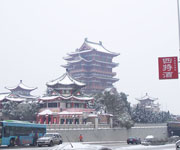
Nanchang (Chinese: 南昌; pinyin: Nánchāng) is the capital of Jiangxi Province in southeastern China, located in the north-central portion of the province. It is bounded on the west by the Jiuling Mountains, and on the east by Poyang Lake. Because of its central location relative to the Yangtze and Pearl River Delta regions, it is a major railroad hub in Southern China. Its population was 5,042,566 whom 4,171,926 in the built-up area made up of six urban districts plus the urbanized counties of Nanchang and Xinjian. As the Bayi Riot 1927 was distinctively recognized by the ruling Communist Party as "firing the first gunshot against the evil Republic of China", the current communist regime has therefore named the city since 1949 "the City of Heroes", "the place where the People's Liberation Army was born", and the most widely known "place where the military banner of the People's Liberation Army was first raised".

Shangrao (simplified Chinese: 上饶; traditional Chinese: 上饒; pinyin: Shàngráo) is a medium-sized prefecture-level city located in the northeast of Jiangxi province, People's Republic of China, bordering Anhui to the north, Zhejiang to the east, and Fujian to the south; the city's western reaches extend into Poyang Lake. According to the 2010 Census, Shangrao has a population of 6,579,714 inhabitants. Shangrao itself is at the very western edge of the Wu-speaking areas, while most of its associated counties speak Gan.
Yichun (Chinese: 宜春; pinyin: Yíchūn; Wade–Giles: I2-ch'un1; Postal map spelling: Ichun) is a mountainous prefecture-level city in western/northwestern Jiangxi province, People's Republic of China, bordering Hunan to the west. Yichun literally means "pleasant spring". It is located in the northwest of the province along a river surrounded by mountains. Yichun has a history of over 2,200 years. It was established in 201 BC during the Han Dynasty. Yichun has a profound Buddhist culture. "Can Lin Qing Gui", the monastic rules for Buddhists at the Buddhist temple, originated from Yichun. Yichun is also the birthplace of many famous literary figures, such as Tao Yuanming and Deng Gu, both of whom are great poets from ancient times. The transportation in Yichun is convenient. The State Highway 320, State Highway 105, the Shanghai-Ruijin Highway and the Ganyue Highway (the Jiangxi-Guangdong Highway) construct a comprehensive traffic network in the city. A large sports complex with two stadiums was built in the 1990s and draws teams for sports competitions from all across China. Agriculture is the main industry but other natural resource industries such as timber and mining are extremely important for the economy. Major mineral deposits include aluminum, tungsten, gold, zinc, and copper. Yichun is also a stop along the major railway running between Beijing and Nanchang, the capital of Jiangxi.
Longyan (simplified Chinese: 龙岩; traditional Chinese: 龍岩; pinyin: Lóngyán; Pe̍h-ōe-jī: Lêng-nâ or Liong-nâ; literally: "dragon rock"; Hakka language: Liùng-ngàm) is a prefecture-level city in southwestern Fujian province, People's Republic of China, bordering Guangdong to the south and Jiangxi to the west.

Quanzhou (formerly called Zayton/Chinchew, Chinese: 泉州; pinyin: Quánzhōu; Wade–Giles: Ch'üan2-chou1; Pe̍h-ōe-jī: Chôan-chiu) is the largest city of Fujian Province, People's Republic of China. It borders all other prefecture-level cities in Fujian but two (Ningde and Nanping) and faces the Taiwan Strait. In older English works, its name may appear as Chinchew, Chinchu, Choanchew, or Zayton, from Arabic. The prefecture-level city of Quanzhou has an area of 11,245 square kilometres (4,342 sq mi) and, as of the 2010 Census, a population of 8,128,530 inhabitants. Its extended metropolitan (built-up area) is home to 6,107,475 inhabitants, encompassing the Licheng, Fengze, and Luojiang urban districts, Jinjiang, Nan'an, and Shishi cities, Hui'an county, and the Quanzhou District for Taiwanese Investment. Quanzhou is now the 12th largest Chinese extended metropolitan area (as of 2010).
Sanming (Chinese: 三明; pinyin: Sānmíng; Foochow Romanized: Săng-mìng)) is a prefecture-level city in western Fujian province, People's Republic of China. It borders Nanping City to the north, Fuzhou City to the east, Quanzhou City to the southeast, Longyan City to the south, and the province of Jiangxi to the west. Sanming lies between Wuyi and Daiyun mountains.
Zhangzhou (Chinese: 漳州; pinyin: Zhāngzhōu; Wade–Giles: Chang1-chou1; Pe̍h-ōe-jī: Chiang-chiu; formerly Lung-ch'i) is a prefecture-level city in southern Fujian province, People's Republic of China. Located on the banks of the Jiulong River (Beixi), Zhangzhou borders the cities of Xiamen and Quanzhou to the northeast, Longyan to the northwest and the province of Guangdong (Shantou City) to the southwest. Zhangzhou is home to 4,809,983 inhabitants at the 2010 census whom those of Longwen and Xiacheng districts are considered as urban. These two districts, together with Longhai and Xiamen, form a metropolitan area that, as of 2010, is home to about 5 million inhabitants. In older English works, its name may appear as Chang-chow or Changchow and in Southeast Asian contexts it appears as Chiang-chew or Chiang Chew from the Hokkien name.
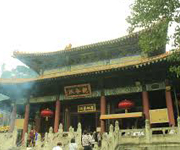
Foshan (Chinese: 佛山), is a prefecture-level city in central Guangdong province, People's Republic of China. The area under the city's jurisdiction is about 3,848.49 km2 (1,485.91 sq mi) and currently has a population of 7.2 million all urban. It's part of probably the most important built-up area in the world, the Pearl River Delta Mega City with more than 44,78 million inhabitants at the 2010 census spread on 9 municipalities (including Macao) and 17,573 km2. The native dialect is the Foshan variant of Cantonese, but many areas of Foshan are now occupied by Mandarin-speaking migrants.

Jiangmen (Chinese: 江门) is a prefecture-level city in Guangdong province in southern China with a population of about 4.45 million in 2010. The 3 urban districts are now part of Guangzhou – Shenzhen conurbation, probably the most important built-up area in the world called the Pearl River Delta Mega City with more than 44,78 million inhabitants at the 2010 census spread on 9 municipalities (including Macao) and 17,573 km2.

Meizhou is a prefecture-level city in eastern Guangdong province, People's Republic of China. It has an area of 15,864.51 km2 (6,125.32 sq mi), and a population of 4.33 million at the 2010 census. It comprises Meijiang District, Xingning City and six counties. Its built-up or metro area made up of 2 urban districts was home to 935,516 inhabitants at the 2010 census. Meizhou is honored with the titles of Hometown of Culture, Hometown of the Overseas Hakka Chinese and Hometown of Football.
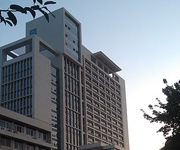
Shàntóu (Chinese: 汕头), also known as Swatow or Suátao, is a prefecture-level city on the eastern coast of Guangdong province, People's Republic of China, with a total population of 5,391,028 as of 2010 and an administrative area of 2,064 square kilometres (797 sq mi). Shantou has direct jurisdiction over six districts and one county, and the six urban districts of Shantou has a population of 5,330,764. With it and the surrounding cities of Jieyang and Chaozhou, the metropolitan region known as Chaoshan covers an area of 10,404 km2 (4,017 sq mi), and had a permanent population of 13,937,897 at the end of 2010. It's built up area spread of 11 districts was home to 11,635,577 inhabitants at the 2010 census. Shantou, a city significant in 19th-century Chinese history as one of the treaty ports established for Western trade and contact, was one of the original Special Economic Zones of the People's Republic of China established in the 1980s, but did not blossom in the manner that cities such as Shenzhen, Xiamen and Zhuhai did. However, it remains eastern Guangdong's economic centre, and is home to Shantou University, a member of the Project 211 group.
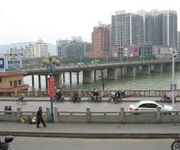
Shaoguan (Chinese: 韶关), is a prefecture-level city in the north of Guangdong province, People's Republic of China, bordering Hunan to the northwest and Jiangxi to the northeast. It is home to the mummified remains of the sixth Zen Buddhist patriarch Huineng. Its built-up or metro area made up of Zhenjiang and Wujiang urban districts was home to 688,229 inhabitants at the 2010 census, Qujiang district not being conurbated yet.

Zhanjiang (Chinese: 湛江; pinyin: Zhànjiāng; French: Fort-Bayard), is a prefecture-level city at the southwestern end of Guangdong province, People's Republic of China, facing Hainan to the south. Its population was 6,994,832 inhabitants at the 2010 census. 1,611,868 live in the built-up area made of four urban districts: Chikan, Xiashan, Potou and Mazhang. In 2007, the city is named China's top ten livable cities by Chinese Cities Brand Value Report, which was released at 2007 Beijing Summit of China Cities Forum.
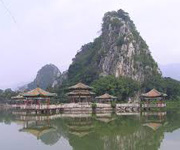
Zhàoqìng (Chinese: 肇庆) is a prefecture-level city of Guangdong province, People's Republic of China and is considered part of the Pearl River Delta region. It is well known for being a regional tourist hub, a medium-sized provincial "college town" as well as an up-and-coming manufacturing center. Residents from Guangzhou, Shenzhen and other nearby cities, as well as people from Hong Kong and Macau, are known to visit the city on weekend getaways and excursions. Its population was 3,918,467 at the 2010 census whom 1,232,462 lived in the built-up (or metro) area made of Duanzhou urban District and Gaoyao County largely being urbanized. Dinghu urban District is not yet conurbated. The main central city, excluding Seven Star Crags, is fairly flat, but thickly forested mountains lie just outside the city limits. Numerous rice paddies and aquaculture ponds are found on the outskirts of the city.
Zhuhai (Chinese: 珠海; pinyin: Zhūhǎi) is a prefecture-level city on the southern coast of Guangdong province in China. Located in the Pearl River Delta, Zhuhai borders Jiangmen to the northwest, Zhongshan to the north, and Macau to the south. Zhuhai was one of the original Special Economic Zones established in the 1980s. Zhuhai is also one of China's premier tourist destinations, being called the Chinese Riviera. The city's population is made up of mostly Mandarin speaking migrants. Its northern part made of Xiangzhou district is now part of the Guangzhou-Shenzhen built-up area, the biggest built-up area in the world with more than 44,478,513 inhabitants at the 2010 census encompassing the whole Shenzhen, Dongguan, Foshan, Zhongshan, Macao cities, main part of Guangzhou, and small parts of Jiangmen and Huizhou cities. According to the Chinese Academy of Social Sciences, Zhuhai is the most livable city in China.
Baise (Chinese: 百色; local pronunciation: paːk˧˥ ɬɐk˥) is the westernmost prefecture-level city of the Guangxi Zhuang Autonomous Region, People's Republic of China, bordering Vietnam as well as the provinces of Guizhou and Yunnan.
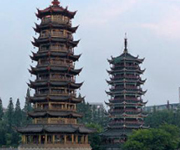
Guilin is a prefecture-level city in the northeast of the Guangxi Zhuang Autonomous Region, China, situated on the west bank of the Li River, and bordering Hunan to the north. Its name means, "Forest of Sweet Osmanthus", owing to the large number of fragrant Sweet Osmanthus trees located in the city. The city has long been renowned for its scenery of karst topography and is one of China's most popular tourist destinations.
Liuzhou (柳州), is a prefecture-level city in north-central Guangxi Zhuang Autonomous Region, People's Republic of China. The prefecture's population was 3,758,700 in 2010, including 1,436,599 in the built-up area made of 4 urban districts. Its total area is 18,777 km2 (7,250 sq mi) and 667 km2 (258 sq mi) for built up area.
Qinzhou (simplified Chinese: 钦州; traditional Chinese: 欽州; pinyin: Qīnzhōu) is a prefecture-level city in Guangxi, People's Republic of China, lying on the Gulf of Tonkin and having an urban population of 944,000. The area originally belonged to Guangdong. The city was originally a county Qinxian (Chinese Postal Map Romanisation: Yamhsien). From the beginning of the present era, Qinzhou (Wade-Giles: K'in-chou] was for many centuries "the center of Chinese overland trade with Indo-China".
Wúzhōu (Chinese: 梧州; Jyutping: Ng⁴zau¹), other names include Wuchow (Chinese Postal Map Romanization), and Ngchow (historically romanised name), is a prefecture-level city in the east of Guangxi Zhuang Autonomous Region, People's Republic of China. Wuzhou is located in eastern Guangxi bordering Guangdong province. It is at the confluence of the Gui River and the Xun River where they form the Xi River; 85% of all water in Guangxi flows through Wuzhou. The total area of Wuzhou is 12,588 km2 (4,860 sq mi).
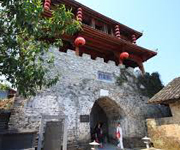
Dānzhōu (Chinese: 儋州) is a city in the northwest of the Chinese island province of Hainan. It is a county-level city administered directly by the province. Although called a "city", Danzhou refers to a large land area in Hainan - an area which was once a county. Within this area is the main city, Danzhou City.
Hǎikǒu (Chinese: 海口), is the capital and most populous city of Hainan province, People's Republic of China. It is situated on the northern coast of Hainan, by the mouth of the Nandu River. The northern part of the city is the district of Haidian Island, which is separated from the main part of Haikou by the Haidian River, a branch of the Nandu. Administratively, Haikou is a prefecture-level city, comprising four districts, and covering 2,280 square kilometres (880 sq mi). There are 2,046,189 inhabitants in the built up area all living within the 4 urban districts of the city. Haikou was originally a port city. Today, more than half of the island's total trade still goes through its ports. The city is home to Hainan University, which has its main campus on Haidian Island.
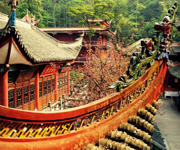
Guìyáng (Chinese: 贵阳) is the capital of Guizhou province of Southwest China. It is located in the centre of the province, situated on the east of the Yunnan–Guizhou Plateau, and on the north bank of the Nanming River, a branch of the Wu River. The city has an elevation of about 1,100 meters. It has an area of 8,034 square kilometres (3,102 sq mi). Its population is 4,324,561 at the 2010 census whom 3,037,159 live in the built up area made of 7 urban districts.

Leshan (simplified Chinese: 乐山; traditional Chinese: 樂山; pinyin: Lèshān; literally: "Happy mountain"; Sichuanese Pinyin: No2san1; local pronunciation: [nʊʔ˧sã˥]) is a prefecture-level city located at the confluence of the Dadu and Min rivers in Sichuan Province, People's Republic of China. Leshan is located on the southwestern fringe of the Red Basin in southern Sichuan, about 120 km (75 mi) from Chengdu. At the 2010 census, its population was 3,235,759 whom 662,814 lived in the built-up (or metro) area made of Shizhong district, as Wutongqiao and Jinkouhe districts are not conurbated yet.
Mianyang (simplified Chinese: 绵阳; traditional Chinese: 綿陽; pinyin: Miányáng) is the second largest prefecture-level city of Sichuan province in Southwest China. Its population was 4,613,871 at the 2010 census covering an area of 20,267.46 square kilometres (7,825.31 sq mi) consisting of Jiangyou, a county-level city, six counties and two urban districts. Its built-up (or metro) area was home to 1,722,133 inhabitants including the city proper of Mianyang (two urban districts) and An County largely being conurbated as urbanisation sprawls. In 2006, Mianyang was ranked as China's third "most suitable city for living" by China Daily, after coastal cities Dalian and Xiamen.
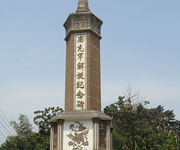
Nanchong (Chinese: 南充; pinyin: Nánchōng; Wade–Giles: Nan-ch'ung; Sichuanese: lan2cong1; ) is a prefecture-level city in the northeast of Sichuan province, People's Republic of China, with an area of 12,479.96 square kilometres (4,818.54 sq mi), and at the 2010 census was home to 6,278,614 people whom 1,858,875 lived in the built-up (or metro) area made of 3 urban districts. It is the second most populated city of Sichuan Province, only after Chengdu. The administrative center is Shunqing District.
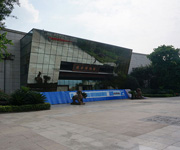
Ya'an (Chinese: 雅安; pinyin: Yǎ'ān; Wade–Giles: Ya-an, Tibetan: Yak-Nga [གཡག་རྔ་]) is a prefecture-level city in the western part of Sichuan province, People's Republic of China, located just below the Tibetan Plateau.

Luzhou (simplified Chinese: 泸州; traditional Chinese: 瀘州; pinyin: Lúzhōu; Sichuanese Pinyin: Nu2zou1; Luzhou dialect: [nu˨˩tsəu˥]), formerly transliterated as Lu-chou or Luchow, is a prefecture-level city located in the southeast of Sichuan Province, People's Republic of China. The city, named Jiangyang until the Southern and Northern Dynasties, is known as the "wine city". Situated at the confluence of the Tuo River and the Yangtze River, Luzhou is not only an important port on the Yangtze river, but also the largest port in both size and output in Sichuan province since Chongqing seceded from Sichuan province in 1997. At the 2010 census its population was 4,218,427 inhabitants whom 919,832 lived in the built-up (or metro) area made of Jiangyang and Longmatan districts, as Naxi district isn't conurbated yet. Luzhou, which borders Yunnan, Guizhou and Chongqing, is the only geographic junction of the four provinces, and was therefore the logical place for a port in ancient China. After the PRC was founded in 1949, Luzhou became the capital of southern Sichuan province. In 1983, Luzhou was approved as a prefecture-level city administratively.
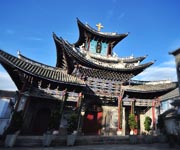
Dali City (Chinese: 大理市; pinyin: Dàlǐ shì; Bai: Darl•lit; Hani: Dafli) is a county-level city in and the seat of the Dali Bai Autonomous Prefecture, in northwestern Yunnan province, People's Republic of China. Dali is one of the most popular tourist destinations in Yunnan, known for its natural scenery and historical and cultural heritage.
Mengzi (Chinese: 蒙自; pinyin: Měngzì; former French romanization: Mongtseu; Chinese Postal Map Romanisation spelling: Mengtsz) is a city in the southeast of Yunnan province, People's Republic of China. Administratively, it is a county-level city and the seat of the Honghe Hani and Yi Autonomous Prefecture, located about 175 kilometres (109 mi) south-southeast of the provincial capital of Kunming. It is situated in the centre of a fertile valley basin on a plateau 1,000 metres (3,300 ft) above sea level. Mengzi was formerly Mengzi County (蒙自县) until October 2010, when it was upgraded to a county-level city.
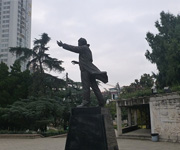
Yuxi (Chinese: 玉溪; pinyin: Yùxī) is a prefecture-level city in the Yunnan province of the People's Republic of China. The administrative center of Yuxi is Hongta District. Yuxi is approximately 90 kilometres (56 mi) south of Kunming.
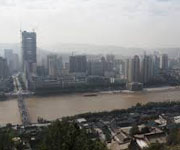
Lánzhōu (simplified Chinese: 兰州; traditional Chinese: 蘭州; Postal map spelling: Lanchow) is the capital and largest city of Gansu Province in Northwest China. A prefecture-level city, it is a key regional transportation hub, allowing areas further west to maintain railroad connections to the eastern half of the country. Lanzhou is home to 3,616,163 inhabitants at the 2010 census and 2,177,130 in the built-up area (urban) of 1,088 square kilometres (420 sq mi).

Yinchuan is the capital of the Ningxia Hui Autonomous Region, People's Republic of China, and former capital of the Western Xia Empire of the Tanguts. It has an area of 4,467 km (2,776 mi) and a total population of 1.99 million. Its built up area is home to 1,290,170 inhabitants spread on 3 urban districts. The name of the city literally means "silver river"; the character for "river" (Chinese: 川; pinyin: chuān) is the same as that in Sichuan, but not as those in, for example, the Yellow River (simplified Chinese: 黄河; traditional Chinese: 黃河; pinyin: Huánghé) or Yangtze River (simplified Chinese: 长江; traditional Chinese: 長江; pinyin: Chángjiāng).

Baoji (help·info) (simplified Chinese: 宝鸡; traditional Chinese: 寶雞; pinyin: Bǎojī) is a prefecture-level city in western Shaanxi province, People's Republic of China.

Xi'an (Chinese: 西安; pinyin: Xī'ān), formerly romanized as Sian, is the capital of Shaanxi province, located in the northwest of the People's Republic of China, in the center of the Guanzhong Plain. One of the oldest cities in China, the city was known as Chang'an before the Ming dynasty. Xi'an is one of the Four Great Ancient Capitals of China, having held the position under several of the most important dynasties in Chinese history, including Zhou, Qin, Han, Sui, and Tang. Xi'an is the starting point of the Silk Road and home to the Terracotta Army of Emperor Qin Shi Huang. Since the 1990s, as part of the economic revival of interior China especially for the central and northwest regions, the city of Xi'an has re-emerged as an important cultural, industrial and educational centre of the central-northwest region, with facilities for research and development, national security and China's space exploration program. Xi'an currently holds sub-provincial status, administerring 9 districts and 4 counties. According to the 2010 Census, Xi'an has an urban population of 5,566,711 in its built-up area made of 7 out of 10 districts (all but Yanliang, Lintong and Gaoling not urbanized yet), while the total population of the Municipality is up to 8,467,837. It is the most populous city in Northwest China, as well as one of the three most populous cities in Western China. According to a July 2012 report by the Economist Intelligence Unit, it was recently named as one of the 13 emerging megacities, or megalopolises, in China. The report pinpoints and highlights the demographic and income trends that are shaping these cities' development.

Yangling District (simplified Chinese: 杨陵区; traditional Chinese: 楊陵區; pinyin: Yánglíng Qū) is a district of the city of Xianyang, Shaanxi province, People's Republic of China, located on the plains of the Wei River. It has an area of 94 square kilometres (36 sq mi) and a population of 155,000. The district is roughly 80 kilometres (50 mi) to the west of the provincial capital Xi'an.
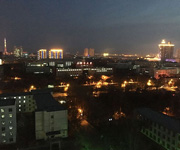
Shihezi (Chinese: 石河子; pinyin: Shíhézǐ; literally: "Stony river banks"; Uyghur: شىخەنزە, ULY: Shixenze, UYY: Xihənzə?) is a sub-prefecture-level city in northern Xinjiang, People's Republic of China. Shihezi is located at the northern foothills of the middle part of the Tian Shan range approximately 136 kilometres (85 mi) from the regional capital of Ürümqi.

Dezhou (Chinese: 德州; pinyin: Dézhōu) is a prefecture-level city in northwestern Shandong province, People's Republic of China. It borders the provincial capital of Jinan to the southeast, Liaocheng to the southwest, Binzhou to the northeast, and the province of Hebei to the north.
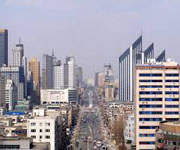
Anshan (Chinese: 鞍山; pinyin: Ānshān; literally: "saddle mountain") is the third largest prefecture level city in Liaoning province, People's Republic of China. Situated in the central area of the province, Anshan is about 92 kilometres (57 mi) south of Shenyang, the provincial capital. Anshan is on the boundary between the Mountains of eastern Liaoning and the plains of the west. The prefecture has a population of 3,584,000 people and covers an area of about 9,252 km2 (3,572 sq mi). The distance from the east to the west of the prefecture is 133 km (83 mi). The area contains the famous Qianshan National Park. The city's name is derived from the shape of a nearby mountain that resembles the shape of a horse's saddle, which can be seen on the left (west) about five minutes before the northbound train arrives at Anshan Station. Anshan is home to the Anshan Iron and Steel Group, one of the largest steel producers in China. Anshan is sister cities with Sheffield Anshan has a population of 3.65 million at the 2010 census. Anshan holds one third of the worlds supply of talcum. Anshan holds a quarter of the worlds reserves of magnesite. Anshan also produced the largest ever jade stone, now a local tourist attraction carved as a Buddha. The built up area encompassing 4 Anshan urban districts (1,529,350 inhabitants) and urban Liaoyang is home to more than 2.17 million inhabitants in 2010.
Yiwu (simplified Chinese: 义乌; traditional Chinese: 義烏; pinyin: Yìwū) is a city of about 1.2 million people[3] in central Zhejiang province, People's Republic of China. Its built-up (or metro) area made of Yiwu and Dongyang cities was home to 2,038,413 inhabitants at the 2010 census. The city is famous for its small commodity trade and vibrant market and is a regional tourist destination. Although administratively Yiwu is a county-level city under the jurisdiction of Jinhua, it is more well-known than Jinhua nationally and internationally.
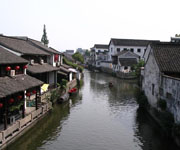
Shaoxing (help·info) is a prefecture-level city on the southern shore of Hangzhou Bay in northeastern Zhejiang province, China. It was formerly known as Kuaiji and Shanyin and abbreviated in Chinese as 越 (Yuè) from the area's former inhabitants. Located on the south bank of the Qiantang River estuary, it borders Ningbo to the east, Taizhou to the southeast, Jinhua to the southwest, and Hangzhou to the west. The city itself is lined with numerous canals and waterways, giving it a classic Jiangnan style scenery though more mountainous than is typical for Jiangnan. At the 2010 census, its population was 4,912,339 inhabitants whom 1,914,683 (Keqiao and Yuecheng districts) lived in the built-up area of Hangzhou-Shaoxing, with 8,156,154 inhabitants. Shaoxing has long been a hotbed of Chinese cultural activity, producing such luminary figures as Wang Xizhi, Zhou Enlai, Lu Xun, and Cai Yuanpei. It is widely known throughout China for Shaoxing wine, meigan cai, and stinky tofu, and was recently featured on A Bite of China. Its local variety of Chinese opera sung in the local dialect and known as Yue or Shaoxing opera is second in popularity only to Peking opera. In 2010, Shaoxing celebrated the 2500th anniversary of the founding of the city. Economically, the city's driven by manufacturing of textiles, electronics, and energy efficient lighting. Zhejiang has the fifth highest per capita GDP in the nation, with the city itself at 32nd nationally by GDP per capita.
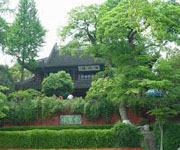
Jiaxing (Chinese: 嘉兴; pinyin: Jiāxīng; Wu Chinese: Gāshīng [kɑɕiŋ]) is a prefecture-level city in northern Zhejiang province, People's Republic of China. Lying on the Grand Canal of China, Jiaxing borders Hangzhou to the southwest, Huzhou to the west, Shanghai to the northeast, and the province of Jiangsu to the north. At the 2010 census, its population was 4,501,657 and its built-up area made of 2 urban districts was home to 1,201,882 inhabitants.

Wuhu (simplified Chinese: 芜湖; traditional Chinese: 蕪湖; pinyin: Wúhú; literally "Weedy Lake") is a prefecture-level city in southeastern Anhui province, People's Republic of China. Sitting on the southeast bank of the Yangtze River, Wuhu borders Xuancheng to the southeast, Chizhou and Tongling to the southwest, Hefei to the northwest, Ma'anshan to the northeast, and the province of Jiangsu to the east, and is approximately 90 km (56 mi) southwest of Nanjing. Its population was 3,545,067 inhabitants at the 2010 census whom 1,264,539 in the built-up (or metro) area made of 3 out of 4 urban districts (all but Sanshan not yet continuously urbanized).
 Immediate attention
Immediate attention